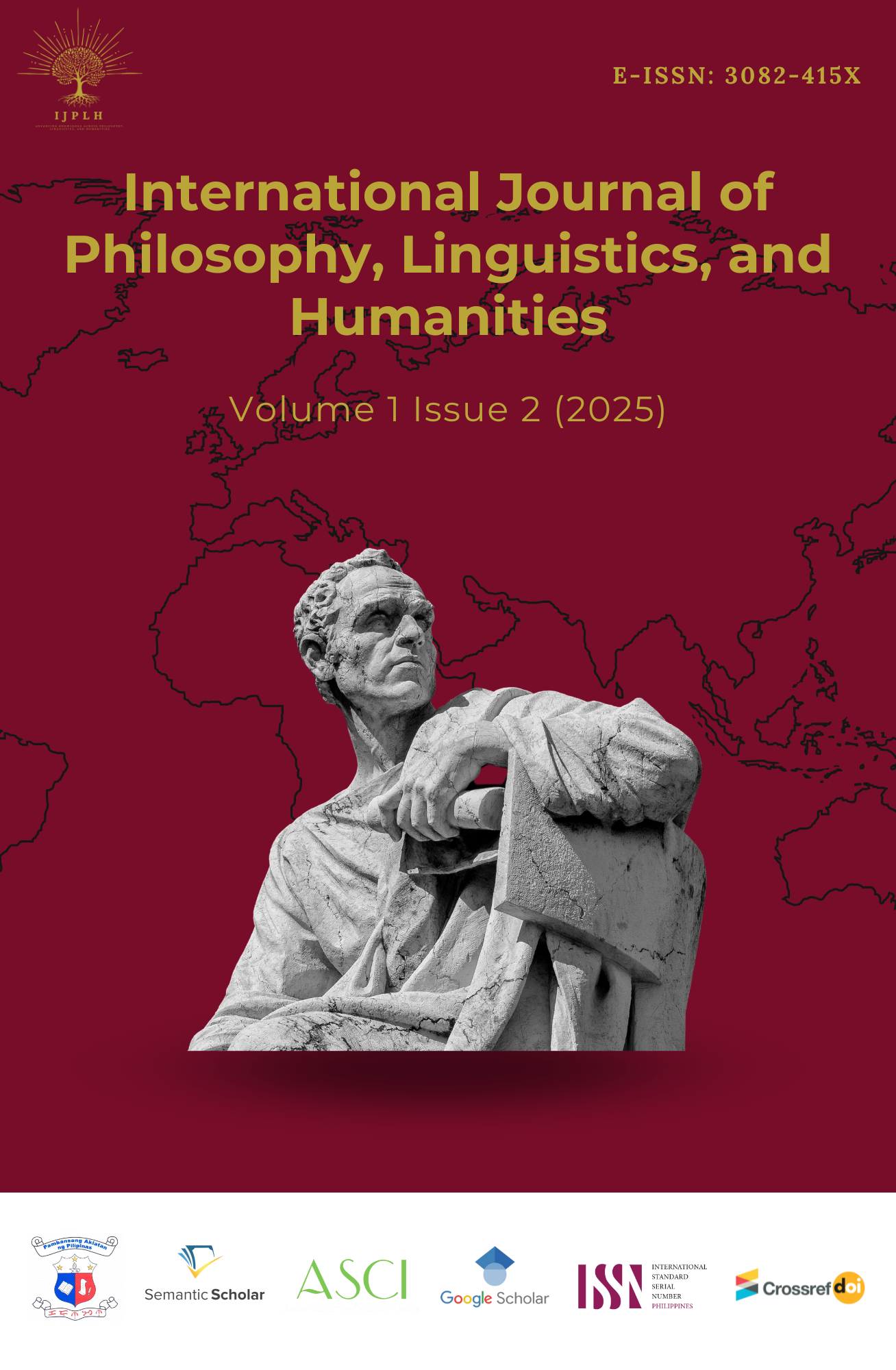The Timeless Whirlwind Emotion Of Air Supply’s Collection: A Musical Discourse Analysis
Main Article Content
Abstract
This study critically examined the stylistic devices, thematic elements, and audience interpretations in Air Supply’s Making Love… The Very Best of Air Supply album, employing a qualitative research design. The corpus comprised twelve (12) songs analyzed through Norman Fairclough’s Critical Discourse Analysis (CDA) framework, supplemented by I. R. Galperin’s stylistic device theory and Raney’s Affective Disposition Theory. Interviews with eleven (11) purposively selected Airheads provided insights into listener reception. The analysis revealed 86 stylistic devices, with metaphor and repetition emerging as the most frequent, alongside personification, simile, imagery, anaphora, hyperbole, parallelism, symbolism, and antithesis. The lyrics conveyed recurring themes of trust, the transformative power of love, the need for intimacy, the desolation of lost relationships, and the emotional impact of past relationship. Audience interpretations reflected emotional connections, including family remembrance, emotional connection, nostalgia, coping mechanisms, and increased positivity. Beyond Air Supply’s repertoire, this study contributes to broader scholarship on how musical discourse integrates literary expression, thematic resonance, and affective audience engagement. The findings may inform discourse studies, cultural research, and applications of music analysis in education and media studies.
Article Details

This work is licensed under a Creative Commons Attribution 4.0 International License.
Copyright © 2024 IJPLH, its licensors, and contributors. All rights are reserved. For all open access content, the Creative Commons (CC) Attribution 4.0 International Public License terms apply.
References
Belfi, A. M., & Jakubowski, K. (2021). Music and autobiographical memory. Music & Science, 4. https://doi.org/10.1177/20592043211047123
Colaizzi, P. F. (1978). Psychological research as the phenomenologist views it. In: Valle, R. S. and King, M., Eds. Existential-Phenomenological Alternatives for Psychology. Oxford University Press, New York.
Fairclough, N. (1992). Discourse and social change. Cambridge: Polity Press.
Galperin, I. R. (1981). Stylistics. Moscow: Higher School Publishing House.
Harvey, A. R. (2020). Links between the neurobiology of oxytocin and human musicality. Frontiers in Human Neuroscience, 14. https://doi.org/10.3389/fnhum.2020.00350
Honcharuk, O. (2023). Recurrence as one of the main syntactic and stylistic means in text construction. Ivan Ohiienko and Contemporary Science and Education Scholarly Papers Philology, 20, 33–42. https://doi.org/10.32626/2309-7086.2023-20.33-42
Li, L., Li, Y., Wu, J., & Gao, H. (2023). Emotional resonance and identity recognition in Chinese late adolescent digital music consumption. Media and Communication, 11(4). https://doi.org/10.17645/mac.v11i4.7099
Lincoln, Y.S. & Guba, E.G. (1985). Naturalistic inquiry. Newbury Park, CA: Sage.
Loureiro, C., Van Der Meulen, K., & Del Barrio, C. (2024). Why I listen to music: Emotion regulation and identity construction through music in mid-adolescence. Empiria Revista De Metodología De Ciencias Sociales, 60, 145–168. https://doi.org/10.5944/empiria.60.2024.39285
Obenza, B., & Silah, S. J. A. (2024). Unveiling emotional resonance: A musical discourse analysis of Taylor Swift’s 'Midnights album’ and its impact on “Swifties.” ELS Journal on Interdisciplinary Studies in Humanities, 7(4), 684–696. https://doi.org/10.34050/els-jish.v7i4.42253
Pang, P. (2022). A method of personal music psychological recognition based on psychological and physiological signals. Scientific Programming, 2022, 1–7. https://doi.org/10.1155/2022/8577034
Peck, L. S. L., & Grealey, P. (2020). Autobiographical significance of meaningful musical experiences: Reflections on youth and identity. Music & Science, 3. https://doi.org/10.1177/2059204320974221
Rochma, M. N., & Irwandi, V. M. (2020). A metaphorical expressions on Justin Timberlake’s songs. Proceedings of the ICECRS, 8. https://doi.org/10.21070/icecrs2020454
Saarikallio, S., Toiviainen, P., Brabant, O., Snape, N., & Erkklä, J. (2022). Music therapeutic emotional processing (MEP): Expression, awareness, and pain predict therapeutic outcome. Psychology of Music, 51(1), 140–158. https://doi.org/10.1177/03057356221087445
Schäfer, K., Saarikallio, S., & Eerola, T. (2020). Music may reduce loneliness and act as social surrogate for a friend: Evidence from an experimental listening study. Music & Science, 3, 205920432093570. https://doi.org/10.1177/2059204320935709
Sedikides, C., Leunissen, J., & Wildschut, T. (2021). The psychological benefits of music-evoked nostalgia. Psychology of Music, 50(6), 2044–2062. https://doi.org/10.1177/03057356211064641
Viper, M., Thyrén, D., & Horwitz, E. B. (2020b). Music as consolation—The importance of music at farewells and mourning. OMEGA - Journal of Death and Dying, 85(1), 155–177. https://doi.org/10.1177/0030222820942391

